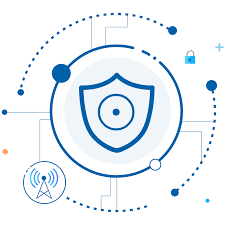The Role of 5G Cybersecurity Solutions in Protecting Next-Generation Networks
With the arrival of 5G technology, we are entering a new era of connectivity that promises faster speeds, lower latency, and the ability to connect billions of devices. From autonomous vehicles to smart cities and advanced healthcare applications, 5G opens the door to numerous innovations. However, along with its vast potential, implementing 5G networks also brings significant security challenges. To address these concerns, 5G cybersecurity solutions are crucial in ensuring the integrity, confidentiality, and availability of data and network services.
In this blog, we will explore the unique cybersecurity challenges 5G networks face and how advanced solutions are helping to protect them from potential threats.
Why 5G Networks Need Advanced Cybersecurity Solutions
The architecture and features of 5G differ significantly from previous generations, which introduces new vulnerabilities. Some of the key reasons why 5G cybersecurity solutions are necessary include:
Increased Connectivity 5G enables massive device connectivity, including IoT (Internet of Things) devices, autonomous systems, and critical infrastructure. Each connected device can become a potential attack vector, making it essential to have robust security mechanisms in place.
Decentralized Network Architecture Unlike 4G networks that operate in a more centralized manner, 5G adopts a decentralized architecture. This shift to distributed networks, including the use of edge computing, makes it more difficult to monitor and secure all network components effectively.
Virtualization and Cloud Integration 5G networks rely heavily on virtualization technologies and cloud infrastructure. While virtualization offers efficiency and scalability, it also introduces new attack surfaces, such as vulnerabilities in hypervisors, containers, and virtual machines that require specific cybersecurity solutions.
Low Latency Applications 5G’s promise of ultra-low latency communication is critical for applications like remote surgery, autonomous driving, and industrial automation. The stakes are higher in these scenarios, making it crucial to ensure that cybersecurity measures do not compromise the performance of these time-sensitive applications.
Key 5G Cybersecurity Threats
Before diving into solutions, it's important to understand the potential threats that 5G networks face:
Denial-of-Service (DoS) Attacks A DoS attack aims to overwhelm a network with traffic, rendering it unusable for legitimate users. With 5G’s ability to connect millions of devices, the risk of DoS attacks increases. Attackers can exploit this high connectivity to launch large-scale attacks on critical infrastructure.
Man-in-the-Middle (MITM) Attacks In a MITM attack, cybercriminals intercept communication between two parties to eavesdrop or alter the transmitted data. In 5G networks, where sensitive information like financial transactions and health data is transmitted, MITM attacks can lead to significant breaches.
Unauthorized Access 5G networks are vulnerable to unauthorized access due to the vast number of connected devices. Attackers can exploit weak authentication mechanisms to gain unauthorized entry into the network, leading to data breaches or system disruptions.
Supply Chain Attacks As 5G networks rely on complex supply chains with multiple vendors, they are susceptible to supply chain attacks. Compromised hardware or software components in the network infrastructure can introduce vulnerabilities that attackers can exploit.
Data Breaches and Espionage The high-speed data transfers enabled by 5G can make networks an attractive target for hackers looking to steal sensitive information. With more personal and corporate data being transmitted via 5G, the risk of espionage and data breaches increases.
5G Cybersecurity Solutions: Safeguarding the Network
To mitigate the risks associated with 5G, organizations need to adopt comprehensive 5G cybersecurity solutions that address the unique challenges of the network. Below are some key solutions that are essential for protecting 5G infrastructure and data:
End-to-End Encryption One of the most effective ways to secure communication in a 5G network is through end-to-end encryption. This ensures that data is encrypted at the source and can only be decrypted by the intended recipient, protecting it from interception or tampering during transmission.
Network Slicing Security 5G networks use a technology called network slicing, which allows the creation of multiple virtual networks on a shared infrastructure. Each slice is customized to serve different applications with varying levels of priority and security needs. Implementing security policies for each network slice ensures that critical applications remain protected from threats, even if another slice is compromised.
AI and Machine Learning-Based Threat Detection 5G networks generate massive amounts of data, making traditional threat detection methods less effective. AI and machine learning algorithms can analyze traffic patterns in real-time, identifying unusual behavior or anomalies that may indicate a cyberattack. These systems can automatically respond to threats, minimizing the impact of the attack.
Zero Trust Architecture With the complexity of 5G networks and the large number of connected devices, a Zero Trust security model is essential. Zero Trust assumes that no user or device is trustworthy by default, regardless of whether they are inside or outside the network perimeter. It requires continuous verification of users and devices, limiting access to sensitive resources based on their trust level.
Secure IoT Device Management Since 5G will support billions of IoT devices, securing these devices is a top priority. Implementing strong authentication, encryption, and regular firmware updates can protect IoT devices from being exploited by attackers. Additionally, device manufacturers must adopt secure coding practices to minimize vulnerabilities in IoT devices.
Multi-Factor Authentication (MFA) Implementing MFA is critical for preventing unauthorized access to 5G networks. By requiring multiple forms of verification—such as passwords, biometrics, or one-time codes—MFA adds an extra layer of security, reducing the risk of unauthorized users gaining access to sensitive data or network resources.
5G Security Monitoring and Analytics Continuous monitoring of network traffic, user behavior, and system activity is vital for detecting and responding to potential threats. Advanced analytics tools can provide real-time insights into network performance and security, enabling proactive threat detection and faster incident response.
Security for Virtualized Network Functions (VNFs) 5G networks rely heavily on virtualized network functions (VNFs), which offer flexibility and scalability but also introduce new security challenges. Protecting VNFs involves ensuring secure virtualization environments, regular patching, and monitoring for vulnerabilities that could be exploited by attackers.
The Future of 5G Cybersecurity
As 5G networks evolve and expand, cybersecurity solutions will need to adapt to keep pace with emerging threats. Several trends are shaping the future of 5G cybersecurity:
- Edge Computing Security: As 5G networks shift more data processing to the edge, securing edge devices and infrastructure will become increasingly important.
- Quantum-Safe Cryptography: With the rise of quantum computing, traditional encryption methods may become vulnerable. Developing quantum-safe cryptographic solutions will be essential for protecting 5G networks in the future.
- 5G Security Standards: Global organizations, including the GSMA and 3GPP, are working to develop security standards for 5G networks. These standards will provide guidelines for securing 5G infrastructure and mitigating potential risks.
Conclusion
The deployment of 5G networks brings immense potential for innovation and growth across industries, but it also introduces new cybersecurity risks that cannot be ignored. As the backbone of next-generation connectivity, 5G requires advanced cybersecurity solutions that can protect the vast number of connected devices, the decentralized network architecture, and the critical applications it supports.
From end-to-end encryption and AI-based threat detection to secure IoT management and Zero Trust models, implementing comprehensive 5G cybersecurity strategies is essential for ensuring the safety and resilience of these networks. As 5G continues to evolve, so too must our approach to securing this transformative technology.




Comments
Post a Comment